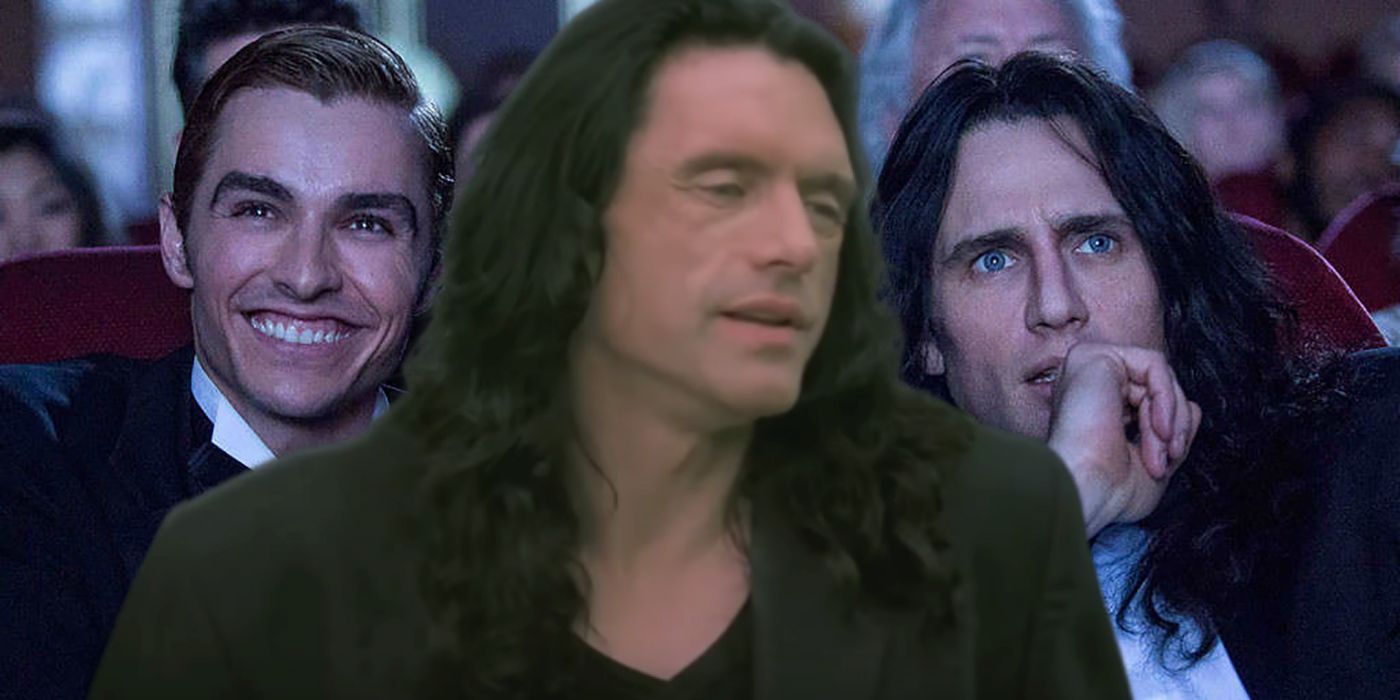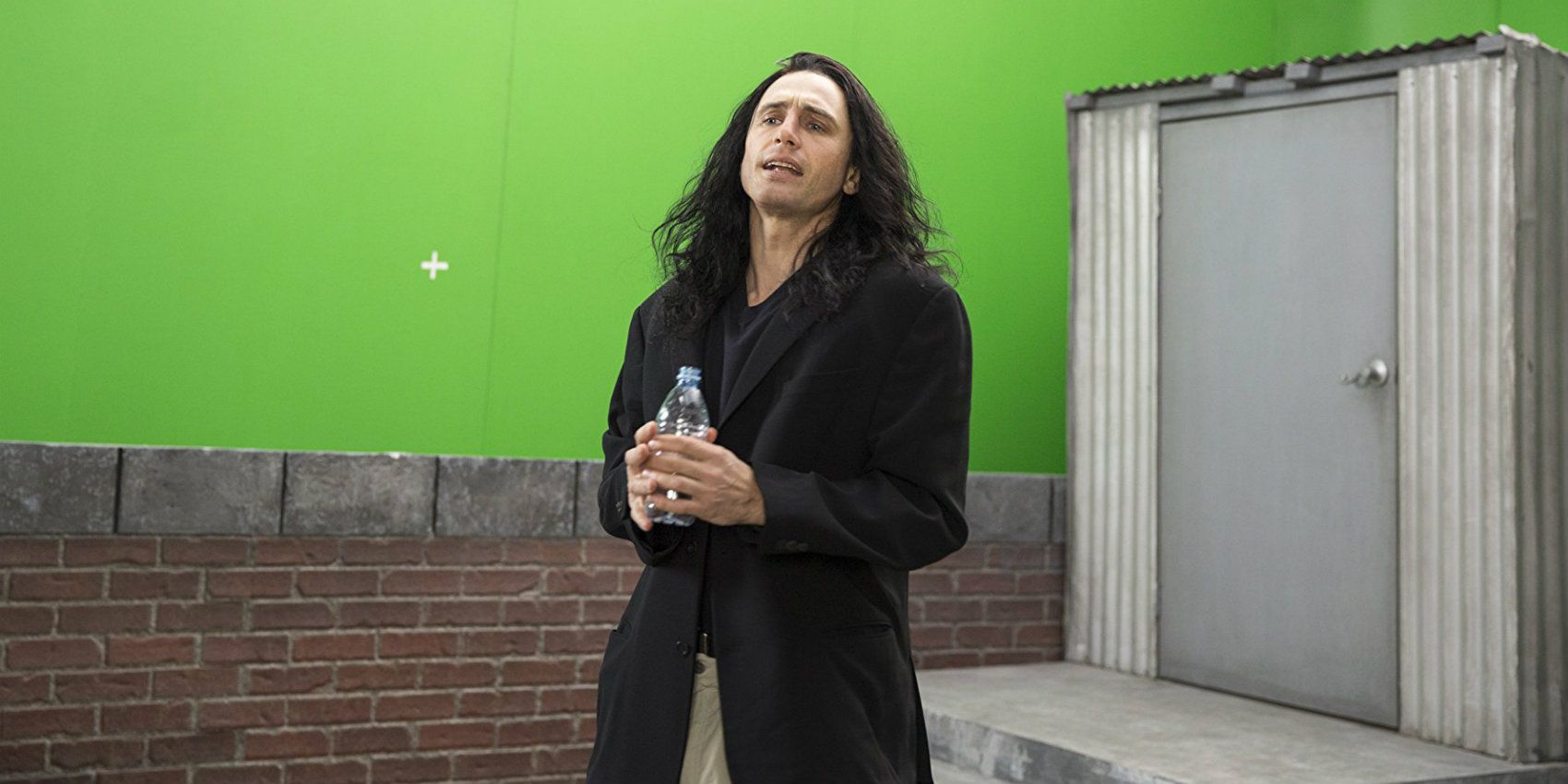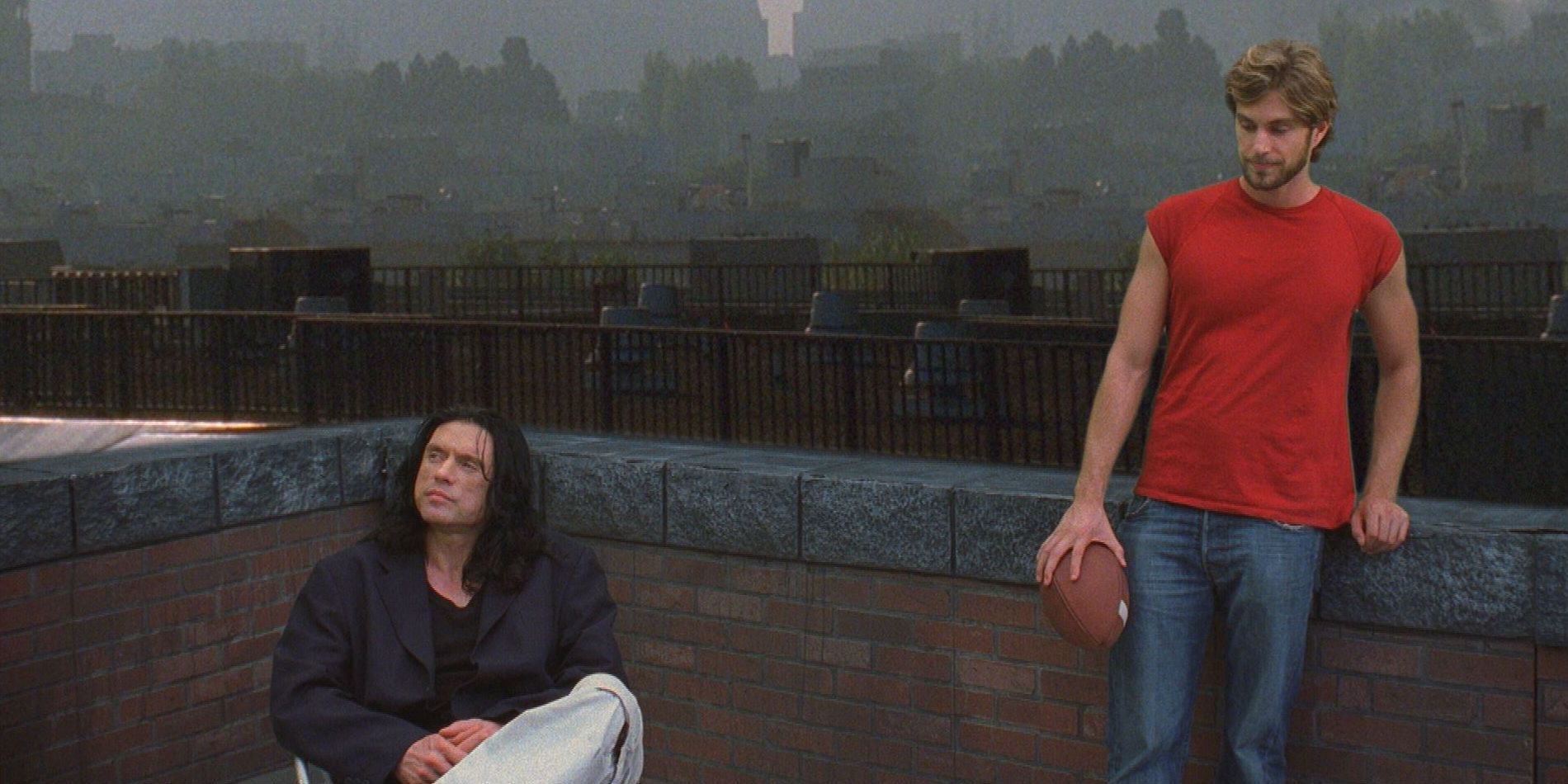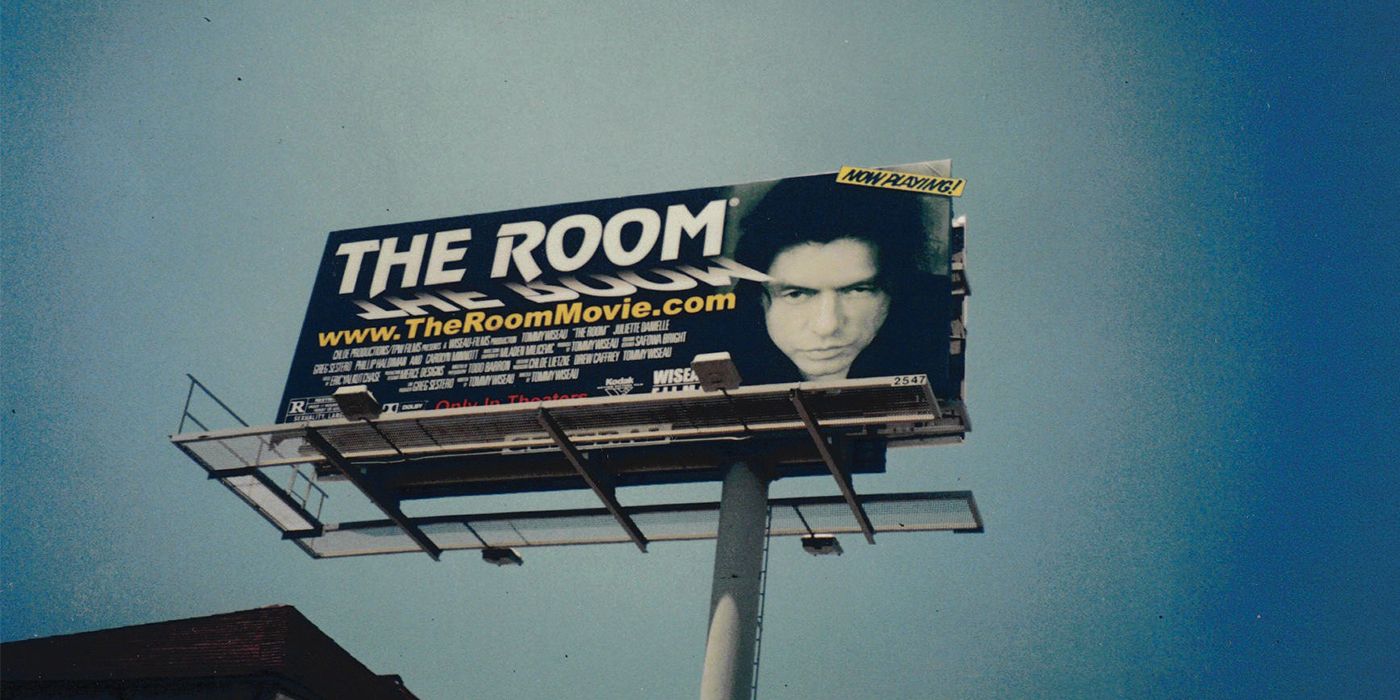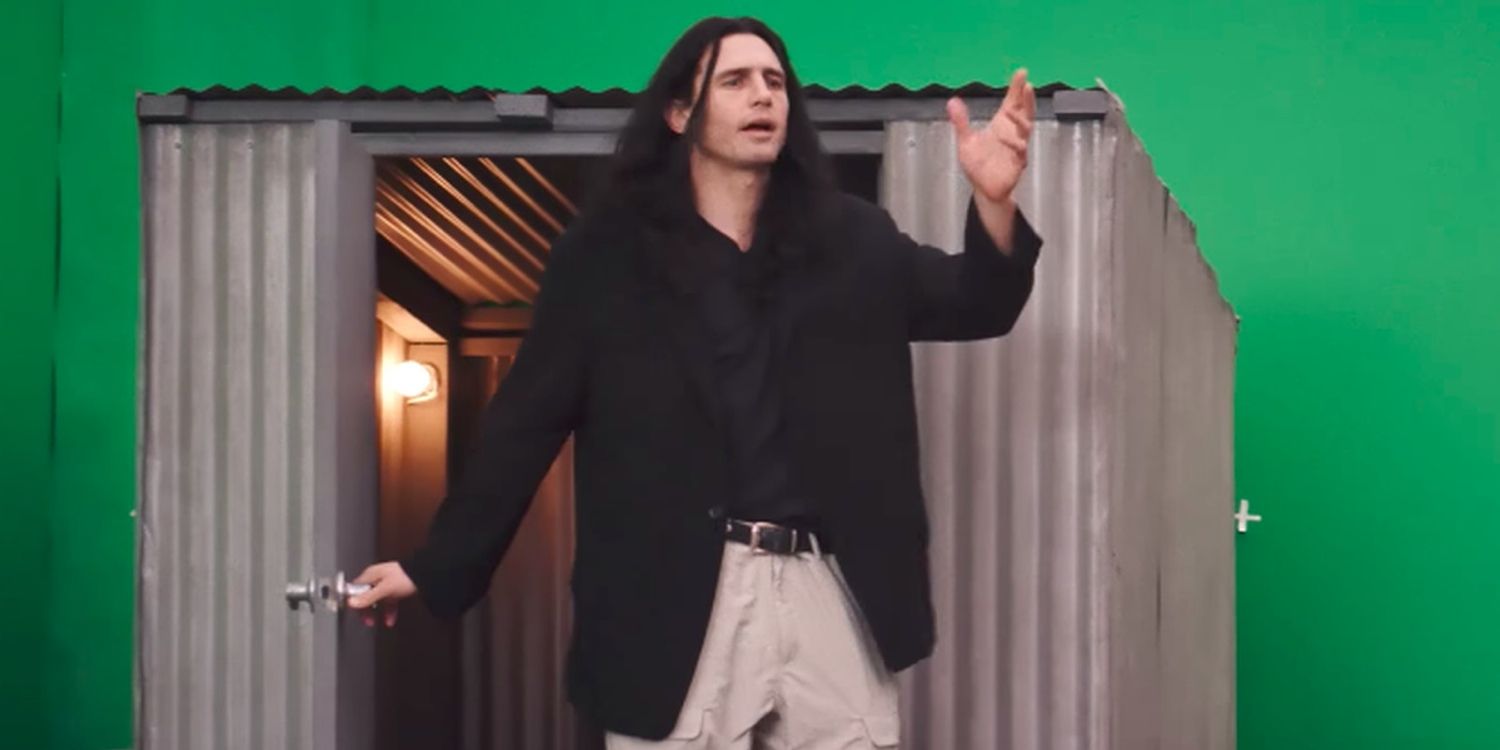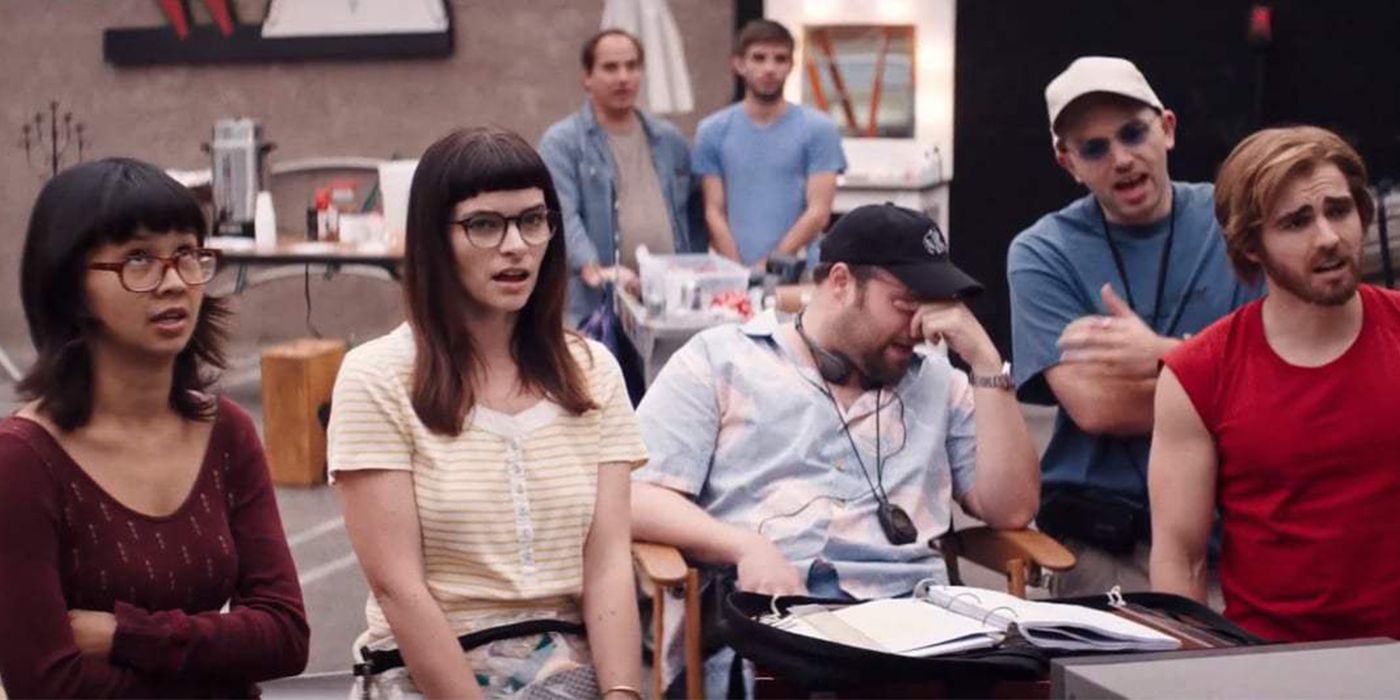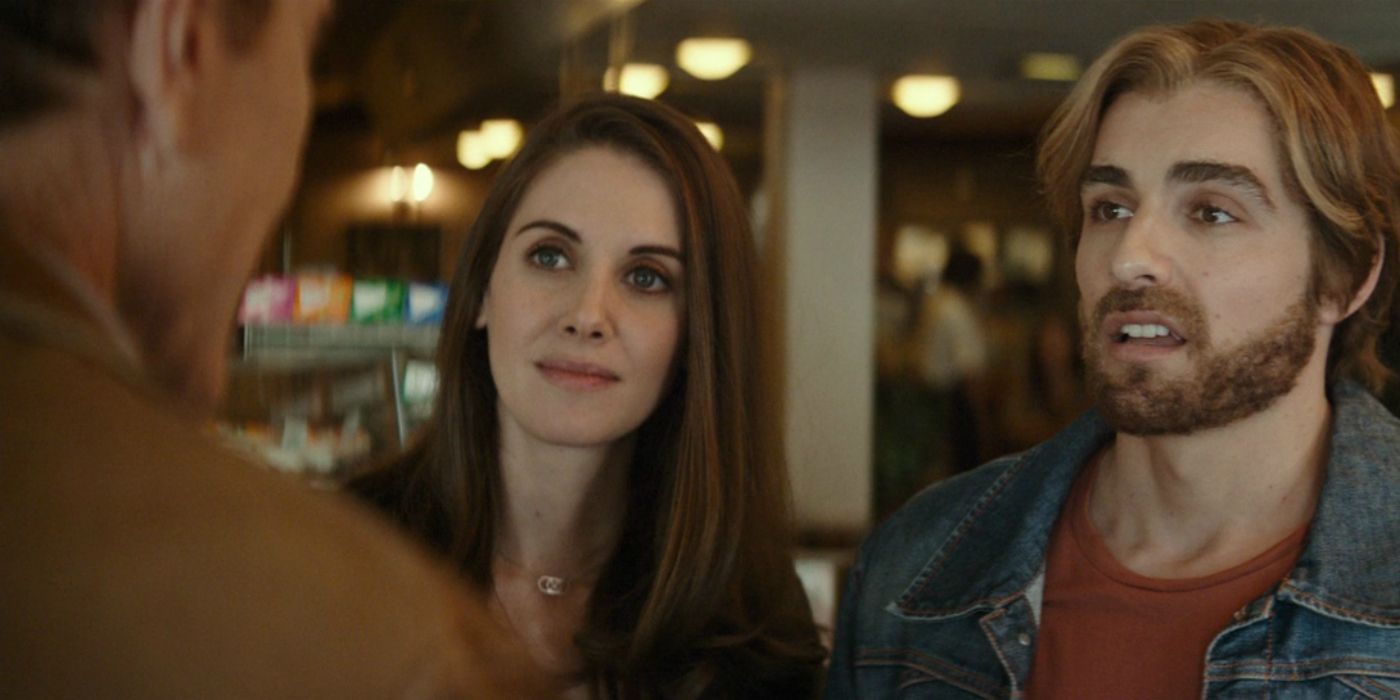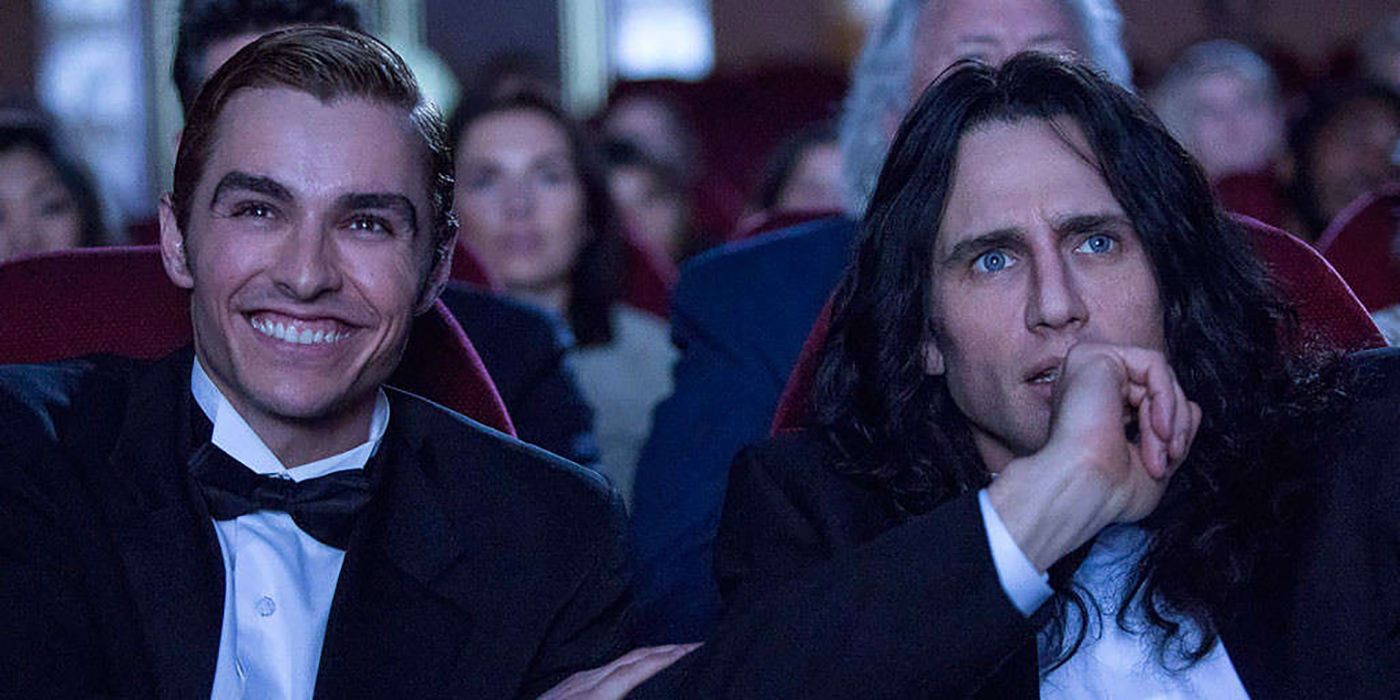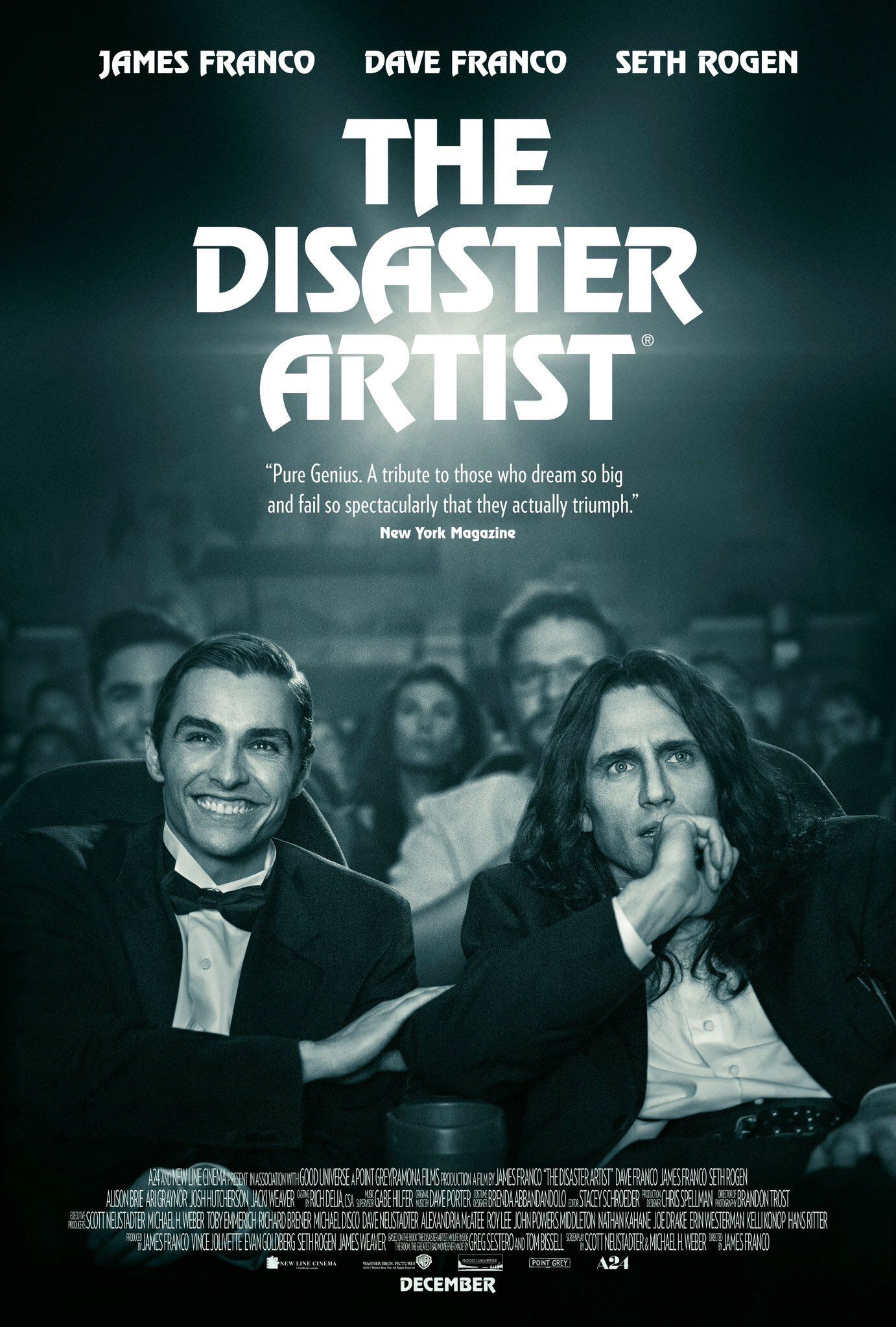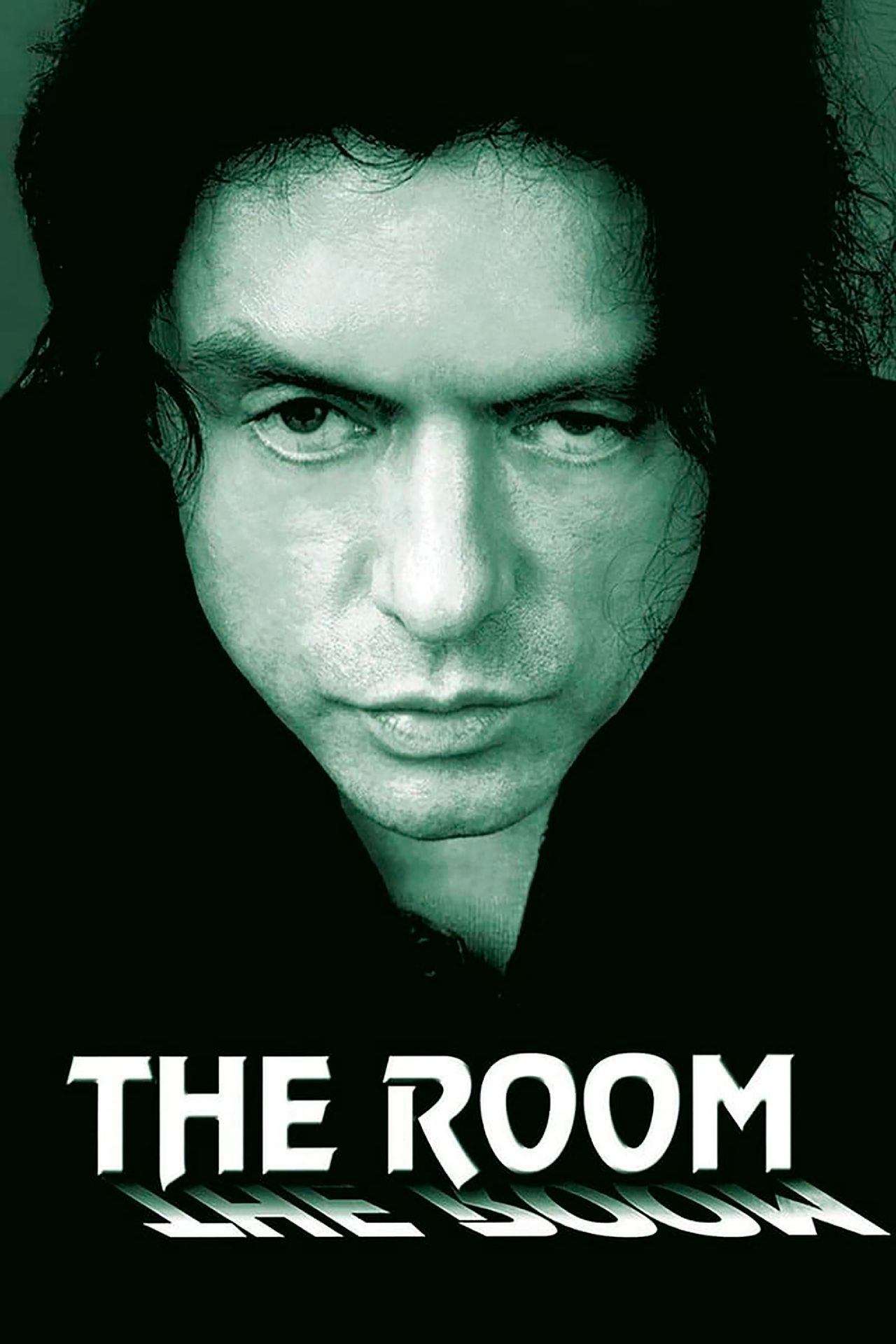James Franco’s The Disaster Artist tells the true story behind Tommy Wiseau’s infamous The Room, though it’s often unclear what parts of Franco’s adaptation were real and which were made up. Often described as the worst movie ever made, The Room has become a cult classic since its release in 2003, largely due to the horribly executed cinematic techniques as well as outrageous history behind production. James Franco's version pays homage to The Room with an excellent comedy effort and perhaps a few fabrications.
As Tommy Wiseau approved the film and has stated his support for it, it’s safe to say that Franco did the box office bomb justice for the most part. The two can even be seen acting along side each other in The Disaster Artist's post-credits scene. There are still discrepancies surrounding what happened in the making of The Room, as Greg Sestero’s memoir about his experience in production has been dismissed by Wiseau as “40 percent true.”
Watching the comedy that ensues in The Disaster Artist is not only engaging but also seemingly unbelievable. The antics portrayed are absurd to say the least, which is largely why the story is so compelling to audiences years later. Here's a detailed guide to break down which parts of The Disaster Artist were true to the making of The Room and which were purely fiction.
Tommy Wiseau's Backstory
The mastermind director and star of The Room is a mystery to say the least. Many details surrounding Tommy Wiseau's life and origin are unknown, including basic details such as where he's from. While The Disaster Artist shows Wiseau frequently claiming he's from New Orleans, he's suspected to be from Poland originally. The best explanation from Tommy was given to Jimmy Kimmel in 2017, “I’m originally from Europe, but I’m, right now, American like everybody else. Long story short, I used to grow up in New Orleans, Louisiana. So, people ask me, ‘Where you come from?’ Right? So, what’d you wanna do? Which country do you pick? Um, you know, I pick New Orleans.” The Disaster Artist also shows Tommy Wiseau writing the script for his masterpiece from scratch, which is also a dramatized falsehood. The Room is actually based off a novel and play that Wiseau wrote prior, which has never been published. Some larger questions, such as how exactly Tommy was able to fund his $6 million movie on his own, may never be answered. However, these mysteries are what make the story of The Room such a cult classic.
Wiseau and Sestero Met In An Acting Class
The origin story of Greg Sestero and Tommy Wiseau meeting in an acting class in the 1990s seems like a convenient shortcut for the sake of biopic, but Franco’s rendering of their meeting is just about exactly how it shaked out. Greg Sestero recalls Tommy performing a scene from the classic Brando film A Streetcar Named Desire with an overuse of the cry “Stella,” just as The Disaster Artist depicts. Tommy would apparently forget lines from the scene and dramatically overdo his parts, ignoring the other people in the scene and causing classmates to hold back laughter. Looks like he must’ve struck a nerve with Sestero though, because after the two linked up, the rest is history.
Greg and Tommy would then bond over their admiration for James Dean and his film Rebel Without a Cause, like how The Disaster Artist conveys. James Dean was known to be a huge inspiration for Wiseau, an interesting detail as James Franco has played James Dean in the past. What's not mentioned much by the Franco iteration is the pair's connection over 1999's The Talented Mr. Ripley, which was also a key factor in the conception of The Room. Sestero recalls Tommy being absolutely amazed and awestruck when they saw the film in theaters, leading him to decide to pursue filmmaking on his own on the way home.
The Room's Billboard
Among all of Tommy Wiseau’s absurd antics during the production of the movie, one of the craziest is undoubtedly the billboard for The Room he posted in Los Angeles to promote the film. Not only did this billboard display a strangely unflattering picture of Wiseau, it also listed his phone number as an RSVP link. As insane as it is to include a personal phone number on a billboard in one of the largest cities in the country, it absolutely did happen, and the replica in The Disaster Artist looks and reads nearly identically. The film adaptation billboard even uses the exact same phone number as the original. Looking back to the initial release of The Room, James Franco has recalled seeing the billboard in Los Angeles back in the early 2000s and questioning the motives behind it. Sounds like the advertisement worked.
The “Oh, hi Mark!” Scene
One of the main trailers for The Disaster Artist focused around the making of the most iconic scene of The Room, the legendary “Oh, hi Mark!” quote. Recited and memed endlessly by fans of the 2003 film, many didn’t know that perfecting the scene was actually a huge undertaking from Wiseau. As the trailer depicts, Wiseau could not for the life of him remember his lines or get his actions right, and Sestero recalls the brief scene taking around three hours to record. This of course is depicted hilariously in The Disaster Artist, which sees the star studded cast trudging on with annoyance as James Franco can’t seem to hit his simple lines.
The Room's Production & Crew
Many production issues with The Room have been detailed since Sestero’s The Disaster Artist book, while some are exaggerated or faked. There’s no denying that Wiseau made some questionable choices throughout the process though, two notable examples being that he recorded in 35mm film and digital at the same time along with buying all of the production equipment instead of renting. These rejections of industry standard weren't groundbreaking or innovative, mainly just financially irresponsible.
The Disaster Artist also shows brief moments of the crew mocking Wiseau behind his back, alluding to some very real issues that the director had with his employees. Wiseau frequently feuded with his crew, as he often showed up late, fired workers, and recast multiple times. Perhaps the most hilarious, however, is the infamous alley debacle depicted in The Disaster Artist, where Wiseau opts to build an alleyway set rather than just use any alleyway in Los Angeles. This, once again, did actually happen in the real life making of The Room. It was a strange battle to fight for Tommy Wiseau, but surely a memorable one.
The Bryan Cranston Scene
Though The Disaster Artist is accurate in portraying the real events of The Room in many ways, the star-studded effort does have some feats of the imagination. Perhaps the most notable exaggeration is the cameo from Bryan Cranston, who sees Greg’s beard and offers him a role in popular 2000s sitcom Malcolm in the Middle. This interaction never actually took place, although it was a nice detail to the setting of the time period. Greg's beard was real and was grown for good reason though, as his memoir revealed that he wore it on purpose as a quasi disguise from the public in case the movie did poorly. James Franco has stated that he’s a big fan of the show and thought it would be fun to have a reference from Bryan Cranston himself.
The Room's Premiere
The Disaster Artist portrays the premiere of The Room as a massive comedic success, with the audience roaring and Tommy accepting that his film fails in dramatic intent but succeeds as a comedy. However, The Room actress Robyn Paris recalls the premiere playing out differently, calling the scene in The Disaster Artist "Hollywood golden-brush stroke treatment." [via EW] She says that while there was laughter from the audience, the response wasn't all positive, and that some left the theater within the first five minutes of the film. So while Franco's film may have been correct in that some of the audience did enjoy the movie, the fantastic reception to the film was exaggerated for the sake of cinema.
The Disaster Artist also shows Tommy and Greg having a big falling out after the filming of The Room, not to be resolved until the big premiere. Greg has stated that this never happened either, explaining that the two were distant after filming because of Tommy's continued efforts of marketing, editing, and recording television dialogue. Tommy and Greg certainly did have differences when filming The Room and throughout their friendship as Greg's memoir details, but the blowup in The Disaster Artist was added in for the sake of storytelling.
Next: You Don't Have To See The Room To Enjoy The Disaster Artist

